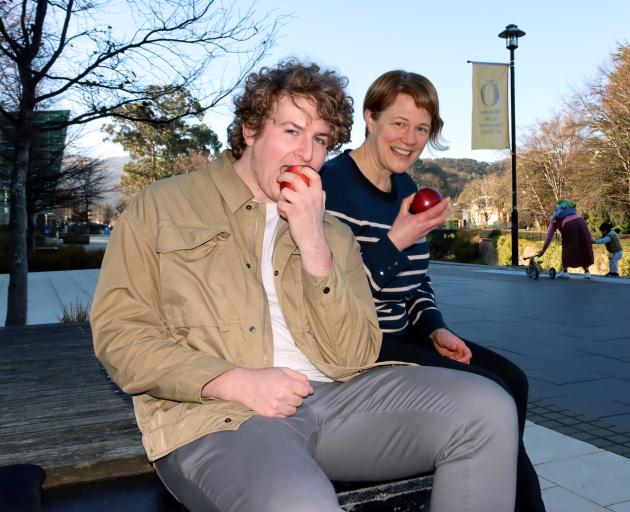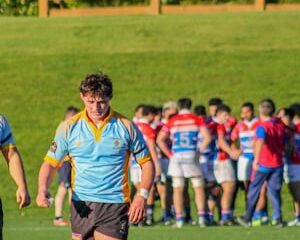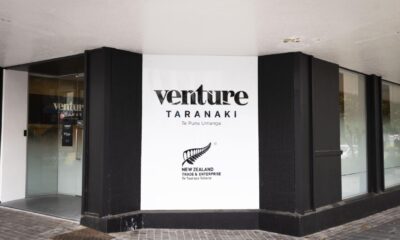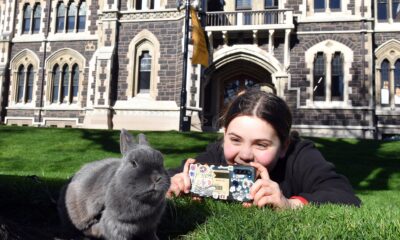Science
Student Researches Heritage Apple Varieties to Preserve Diversity

Aaron Hewson, a master of science student at the University of Otago, is conducting an extensive study on over 300 apple varieties from the Jim Dunckley Heritage Orchard. Established by the Coastal Otago Branch of the New Zealand Tree Crops Association 25 years ago, this orchard is recognized as one of New Zealand’s most diverse collections of apple cultivars. The collection features uniquely named varieties such as Peasgood Nonsuch, Nonnetit Bastard, Warner’s King, and Albany Beauty.
Hewson’s research aims to assist in the preservation and propagation of these heritage cultivars by ensuring accurate identification through genetic analysis. The varieties were collected in the 1990s by the late Jim Dunckley from various locations throughout Otago and Southland, with a significant number sourced from Clyde, which housed an old Plant & Food Research orchard. Hewson describes the collection as a “hodgepodge mix,” with some trees named by local farmers referencing nearby landmarks, often leading to discrepancies in their genetic lineage.
One particularly intriguing case involves a cultivar known as Granny Smith, recognized globally, and another called Lord Lambourne. Despite expectations of significant differences, genetic testing revealed that these two should be genetically identical, prompting questions about the accuracy of their names. Hewson noted, “One of those names has to be wrong.”
To facilitate this genetic analysis, samples were collected by students and faculty from the Plant Biochemistry Lab, carefully labeled, and freeze-dried. These samples were then dispatched to a laboratory in France, supported by Plant & Food Research, now part of the Bioeconomy Science Institute. Hewson emphasized the importance of his co-supervisor, Dr. Elena Lopez-Girona, whose expertise has been invaluable throughout the research process. “They allowed us to send our samples with their bulk group of samples for genotyping by SNP chip,” he explained.
The SNP chip is a laboratory technique that analyzes approximately 50,000 known DNA hotspots in apple leaves to produce a genetic fingerprint. This fingerprint reveals whether two trees belong to the same variety or are different. Given the stringent biosecurity regulations surrounding the importation of new apple genetics, the local collection may serve as a crucial resource for traits such as disease resistance.
Hewson conveyed that globally, there are around 10,000 different apple varieties, yet all commercial varieties can trace their lineage back to just six initial apples. This narrow genetic base poses a risk to apple cultivation. According to Associate Professor Lynnette Brownfield, another of Hewson’s co-supervisors, identifying the heritage cultivars in the orchard could assist breeders in discovering new genetic material, particularly for disease resistance, thereby enhancing future breeding options.
The Coastal Otago Branch of the New Zealand Tree Crops Association oversees the orchard and will determine how to utilize the research findings, as noted by Brownfield. The objective is to assign unique identifiers to all trees in the collection, enabling better communication with breeders ranging from backyard growers to large organizations like Plant & Food Research. This initiative aims to provide necessary germplasm, ensuring the ongoing vitality of apple cultivation in New Zealand.
-

 Sports1 month ago
Sports1 month agoNetball New Zealand Stands Down Dame Noeline Taurua for Series
-

 Entertainment1 month ago
Entertainment1 month agoTributes Pour In for Lachlan Rofe, Reality Star, Dead at 47
-

 Sports1 month ago
Sports1 month agoSilver Ferns Legend Laura Langman Criticizes Team’s Attitude
-

 Entertainment1 week ago
Entertainment1 week agoNew ‘Maverick’ Chaser Joins Beat the Chasers Season Finale
-

 Entertainment2 months ago
Entertainment2 months agoKhloe Kardashian Embraces Innovative Stem Cell Therapy in Mexico
-

 Sports2 months ago
Sports2 months agoGaël Monfils Set to Defend ASB Classic Title in January 2026
-

 World3 months ago
World3 months agoPolice Arrest Multiple Individuals During Funeral for Zain Taikato-Fox
-

 Politics2 weeks ago
Politics2 weeks agoNetball NZ Calls for Respect Amid Dame Taurua’s Standoff
-

 Entertainment3 weeks ago
Entertainment3 weeks agoTyson Fury’s Daughter Venezuela Gets Engaged at Birthday Bash
-

 Sports3 weeks ago
Sports3 weeks agoHeather McMahan Steps Down as Ryder Cup Host After Controversy
-

 Entertainment3 weeks ago
Entertainment3 weeks agoTyson Fury’s Daughter Venezuela Gets Engaged at Birthday Bash
-

 World2 weeks ago
World2 weeks agoNew Zealand Firefighters Plan Strike on October 17 Over Pay Disputes



















